Samaaro + Your CRM: Zero Integration Fee for Annual Sign-Ups Until 30 June, 2025
- 00Days
- 00Hrs
- 00Min
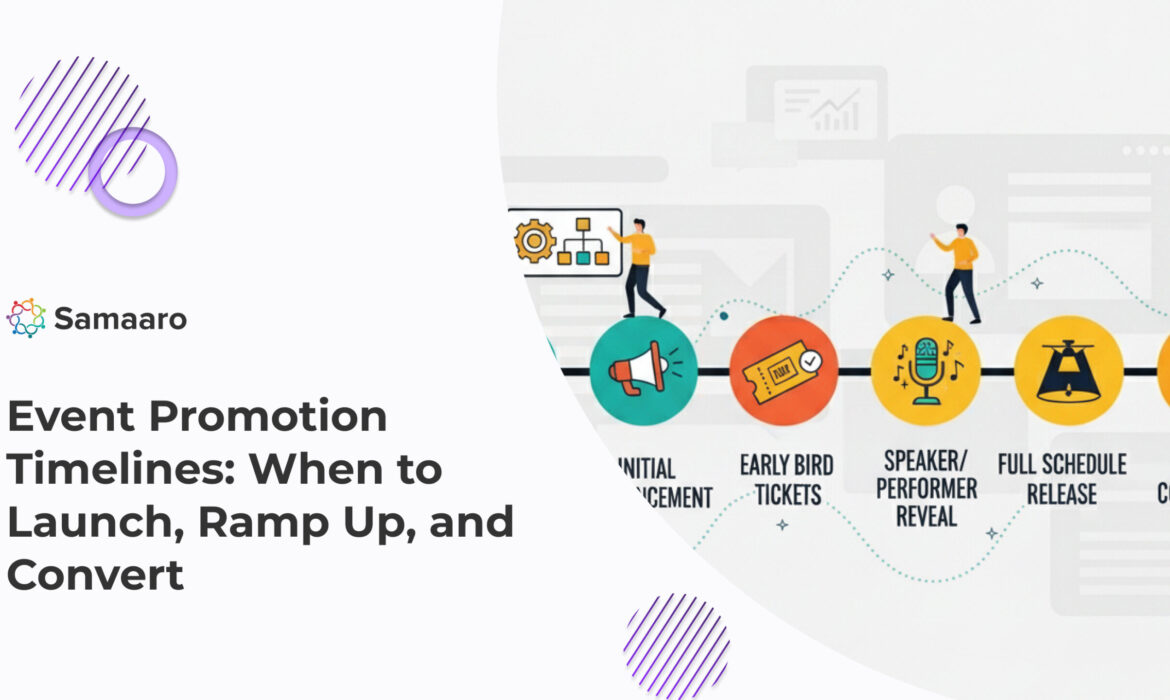
Every marketer knows that channels are important, email, social, ads, partnerships, they all matter. But one of the biggest factors that differentiates good events from poor ones is not channel, but rather timing.
If you launch a campaign too late, you won’t have enough time to generate awareness. If you push too hard at an inopportune time, your audience may tune out. And if you wait until the last minute, even the most polished campaign will probably not convert.
That is why the promotion timeline is just as important as the channels. For B2B firms when events usually have expensive budgets, valuable leads and long durations of decision making, timing is strategic in the sense that taking a more sequential approach can help create consistent momentum for prospects moving through each stage, awareness, engagement and finally action/purchase.
This article shows the three critical event promotion phases- Launch, Ramp Up and Conversion, and helps to show how to avoid wasted budgets and lost ROI due to timing.
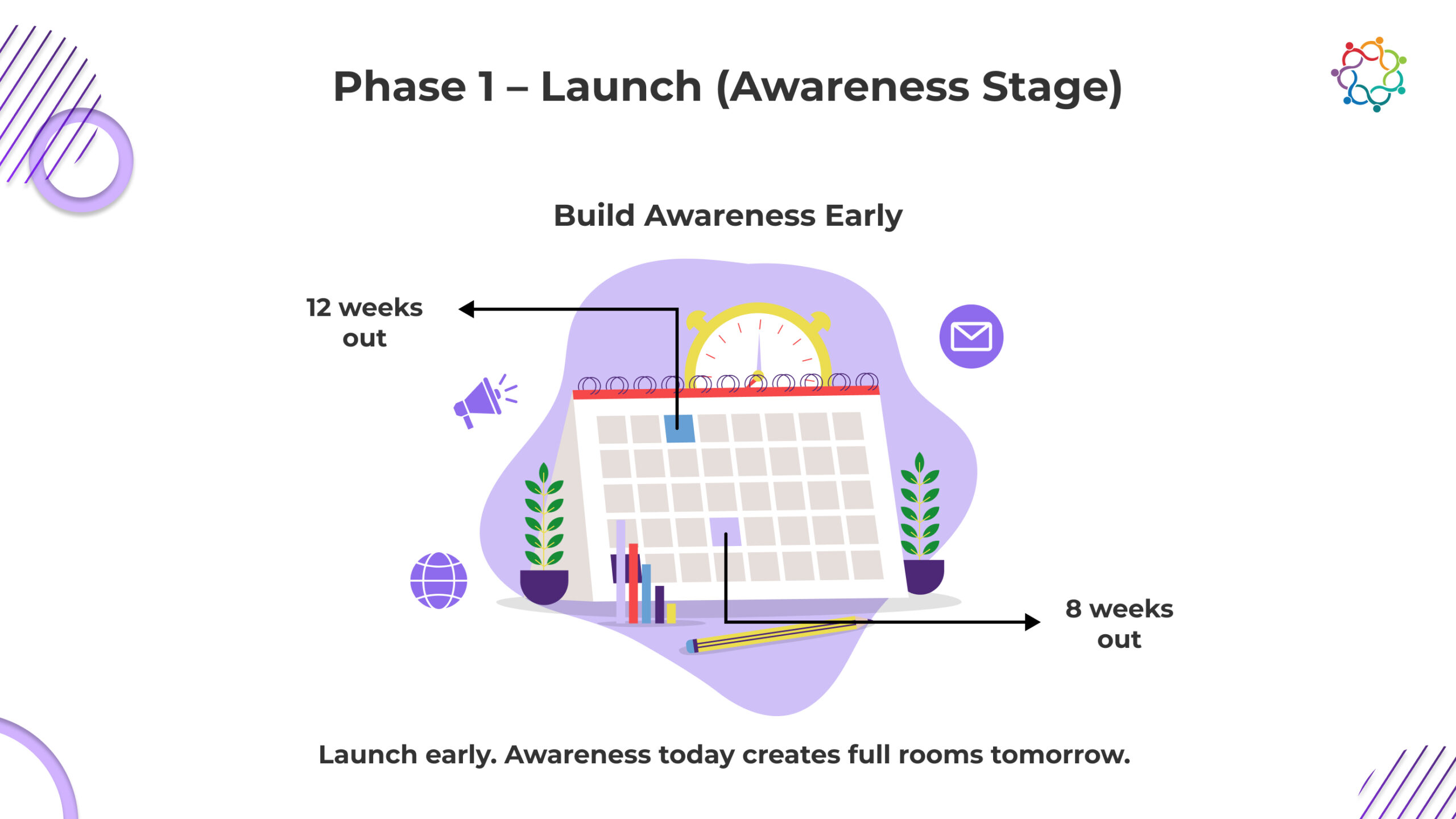
The first step is planting the seed. Your audience does not need much information at this stage. They only need to know:
This is where you create excitement. This is where you start building your credibility.
Some things in your Launch phase:
Why It Is Important:
Enterprise buyers and decision-makers need time to block out their calendars – budgets are often determined months ahead. If you do not notify them early, you risk the chance of them tying themselves to another event.
Think of this as your awareness window. You will hopefully get them curious and stop them from blocking off that space in their minds for competitors.
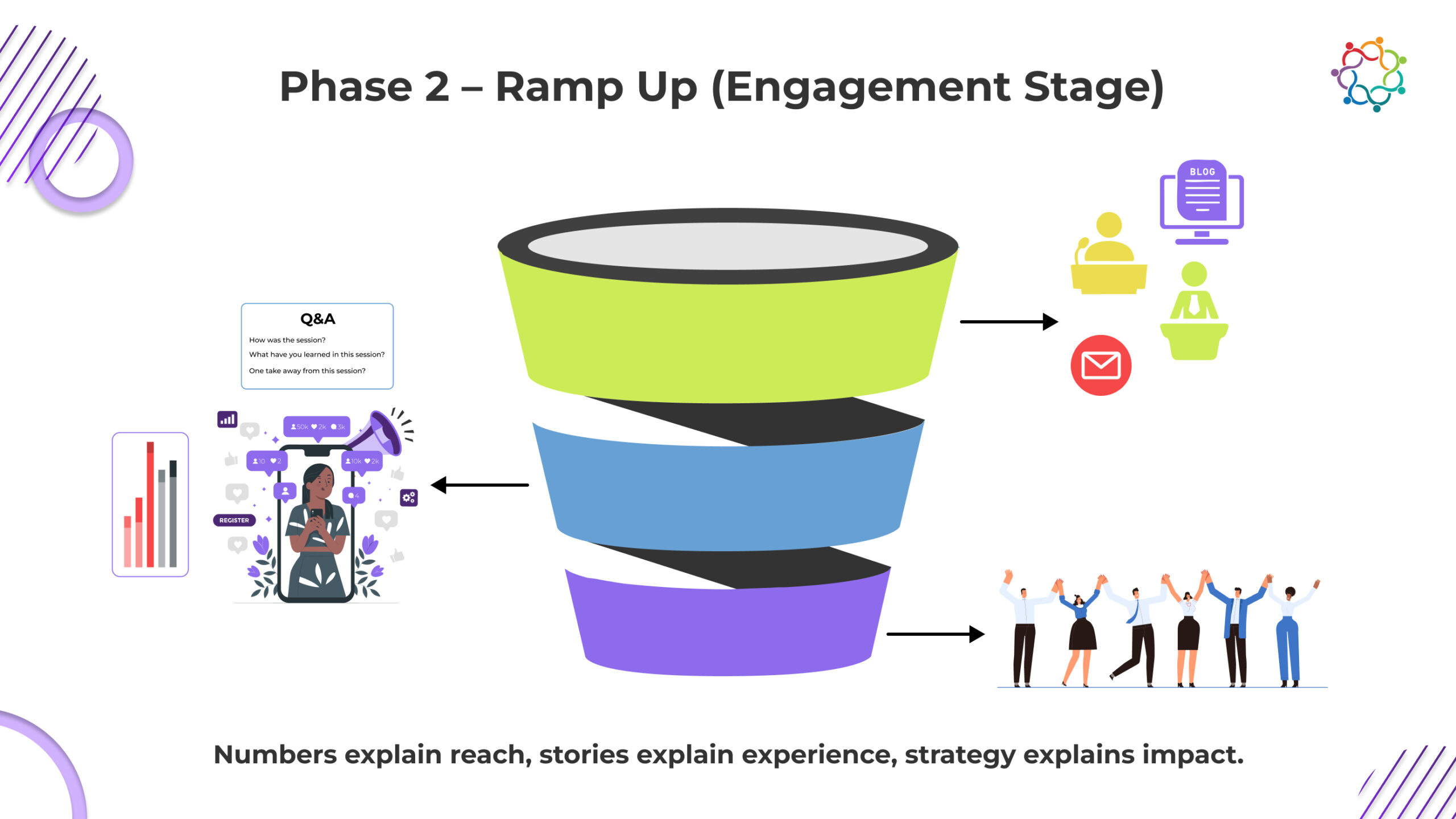
Once awareness is created, it’s time to give your audience reasons to care. The Ramp Up stage of engagement increases the depth of engagement with your audience by providing content, value, and inviting them to participate.
Key activities in the Ramp Up Stage:
Why is it important?
In the middle stage is where participants will internally develop their perspective on why your event is worth their time. Without having truly developed an audience engagement strategy the awareness that was generated in the first stage, will fade away. Start with content rich previews of your event so that potential participants can decide it is not merely happening, but valuable and cannot be missed.
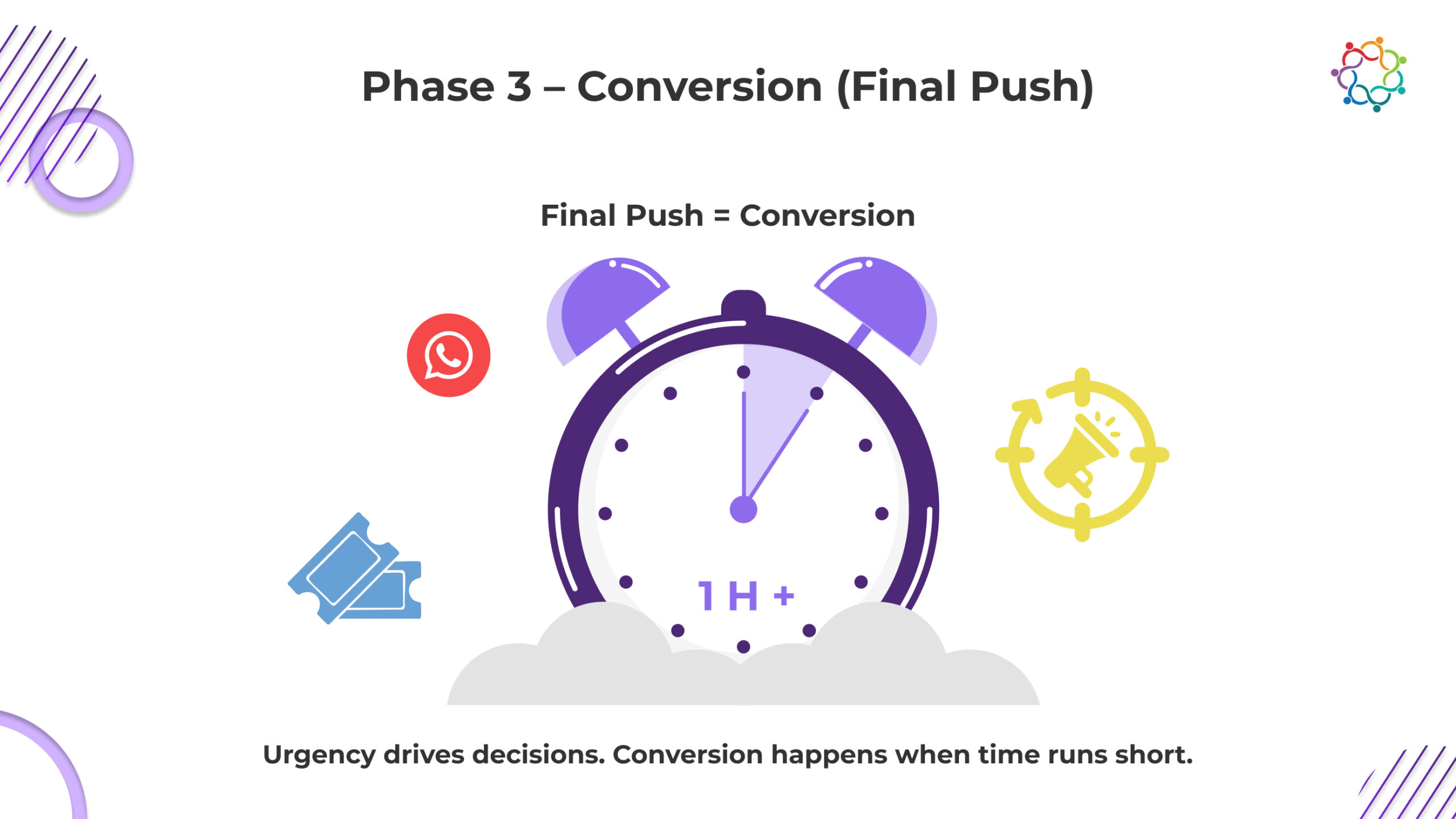
This is where urgency will serve you best, the Conversion Phase is all about taking engaged prospects and converting them into confirmed attendees.
Key Activities in the Conversion Phase:
Why This Is Important:
Engaged audiences will procrastinate. So, a final push may be just what it takes to ensure they don’t wait until it is too late. The Conversion Phase helps give your audiences something that helps differentiate between “interest” and commitment.
Promotional timelines aren’t inherently bad; however, they are mismanaged more often than not. These behaviours are often the fatal flaws of even the best-funded promotional campaign:
Take away? – Timing is not so much, guesswork, it is pacing.
Samaaro assists enterprises in implementing these principles using:
By aligning timelines with channels, Samaaro guarantees that promotion campaigns will not only run, but run strategically.
Event promotion isn’t just about how many channels you use or how much budget you spend. It’s about when you act.
The most successful enterprise campaigns follow a simple rhythm:
By treating timing as a strategic lever, you’ll maximize ROI, avoid wasted spend, and build momentum that carries directly into event-day success.
Want to optimize promotion timelines? Download our Event Promotion white paper or explore Samaaro’s campaign tools.

Built for modern marketing teams, Samaaro’s AI-powered event-tech platform helps you run events more efficiently, reduce manual work, engage attendees, capture qualified leads and gain real-time visibility into your events’ performance.
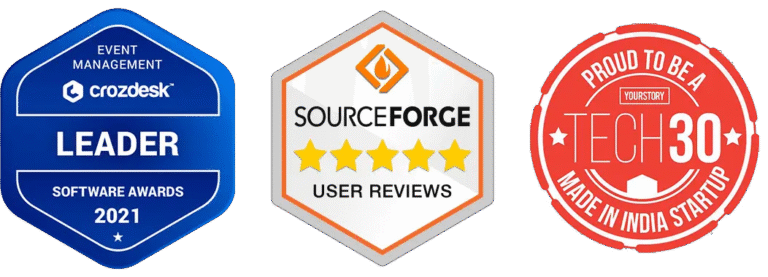
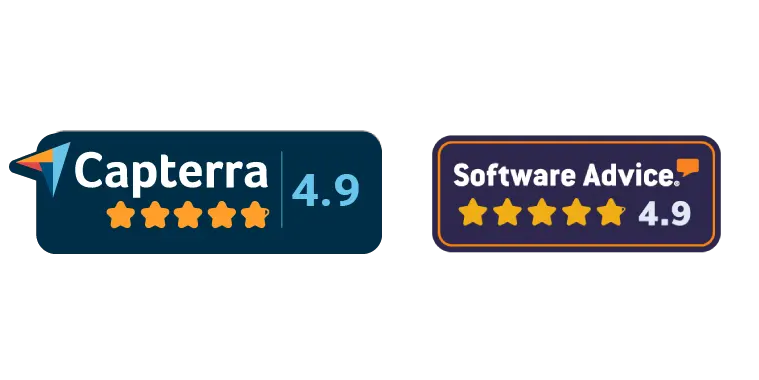
© 2025 — Samaaro. All Rights Reserved.